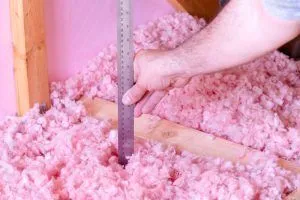
If one home upgrade could lower your energy bills, improve the comfort of your home, give it a greener footprint, and raise your home’s value, it would be foolish to avoid it! Attic insulation can do all of this, but does it really work in a hot climate? Isn’t air conditioning enough?
The answer is yes. Insulation is just like a blanket for your home. It makes a barrier where heat can’t flow in or out easily. It keeps the heat from your attic space from entering your home, and it keeps the cool air inside your house from escaping easily.
Does it Really Work? Sounds Counterintuitive…
Here’s an experiment you can try. Take two bags of ice and wrap one up in your heaviest blanket. Lay both bags outside in the sun and see how long it takes for the ice to melt. You’ll discover that the wrapped bag melts more slowly.
It’s the same way with your home. When your HVAC system pumps cold air into your house, the insulation traps that air inside your home and keeps the hot air from coming in. This has wonderful benefits to your home’s value.
Attic insulation, in particular, is the best place to put insulation in a hot climate. Your roof receives the most solar radiation and will make that space boiling. Insulation keeps that hot air from moving into your home, and can even reflect some of it back outside.
Makes Your Home More Green
Controlling the flow of hot and cold air in your home is an important part of making your home more green. By making your home’s temperature more stable, your HVAC unit doesn’t have to work as hard to maintain the temperature.
This means less energy is used for heating and cooling. Less energy use means your home has a lower carbon footprint. You can speak with a home insulation specialist about which forms of attic insulation are best for improving the energy efficiency of your home.
Saves Your Budget
Installing attic insulation in a hot climate is a home improvement that can pay for itself quickly. Lower energy bills and less wear and tear on your HVAC system can add up to huge savings for your budget.
Also, if you decide to sell your home, that energy efficiency can add massive value to your home. A home that stays cool in a hot climate is an attractive home in locations like Arizona or Nevada.
What Type of Attic Insulation Should I Get?
For attic insulation in hot climates, blown fiberglass is the best option. It’s fire retardant, water-resistant, and does not settle like paper insulation can. It also doesn’t give off gasses like formaldehyde like spray foam insulation can.
Insulation is rated in R-value. The higher the number, the better the insulation. For hot areas, shoot for an R-value of between 30 and 60. The more your home is in direct sunlight, the more R-value you’ll need.
You can also reduce the sun’s effect on your home by installing radiant barriers. These reflect heat back toward your home’s roof and away from the room. Ask an insulation specialist if this option is good for your home.
A Win All Around
With all these benefits, there’s no reason to put off adding or improving your home’s attic insulation in a hot climate. You’ll need a professional to do it, but the effects can last 20-30 years! Energy prices aren’t dropping soon, so the upgrade will definitely pay for itself.


